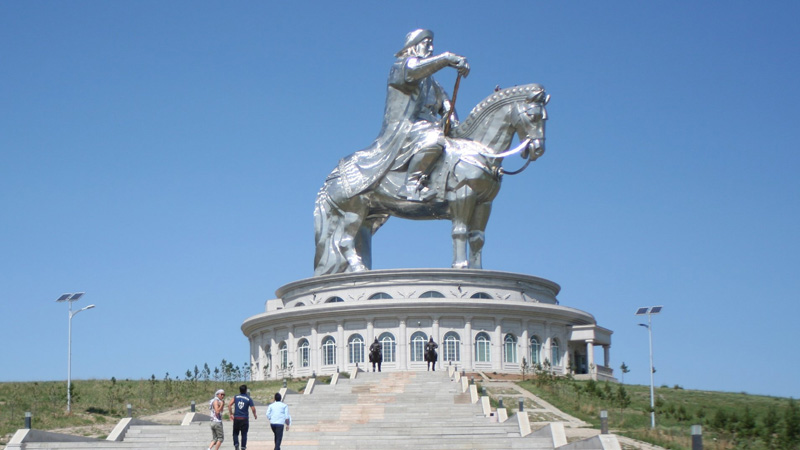
Throughout history, horses have symbolized strength, freedom, and nobility, inspiring countless artists to immortalize them in stunning sculptures.
From ancient civilizations to modern cities, horse statues capture the spirit of these magnificent creatures, serving as both art and tribute. Each statue tells a unique story, reflecting the culture and values of its time.
In this exploration of ten famous horse statues, readers will discover remarkable works that not only showcase artistic brilliance but also highlight the historical significance of horses in human society.
These iconic sculptures, scattered across the globe, invite admiration and curiosity, making them must-see landmarks for travelers and art enthusiasts alike. Join the journey to uncover the beauty and legacy behind these equestrian masterpieces.
1. Equestrian Statue of Marcus Aurelius
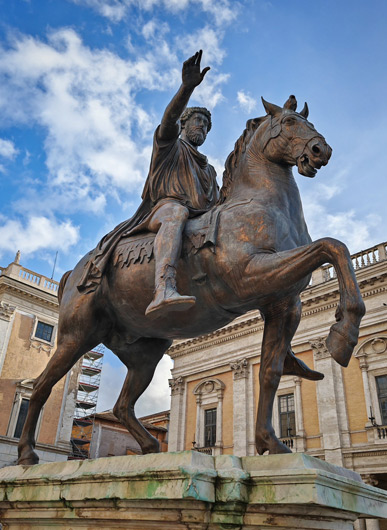
The Equestrian Statue of Marcus Aurelius stands tall in Rome, capturing attention with its impressive design.
Created in the second century AD, this bronze sculpture portrays Emperor Marcus Aurelius on horseback, exuding power and wisdom.
It represents his leadership during turbulent times and embodies philosophy and strength. Its original purpose was to highlight the emperor’s achievements, making it a remarkable symbol of Roman heritage.
Today, it resides in the Capitoline Museums, inspiring countless visitors with its historical significance and artistic mastery.
2. Equestrian statue of Gattamelata
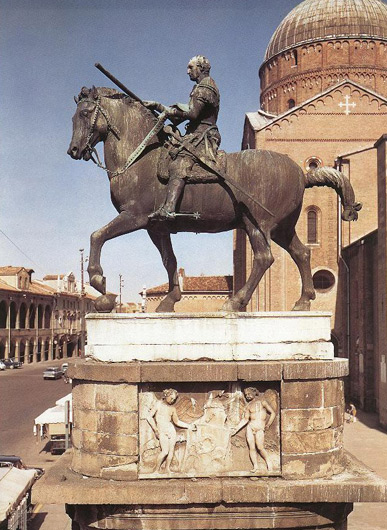
Celebrated as a masterpiece, the Equestrian Statue of Gattamelata, created by Donatello in the 15th century, stands proudly in Padua, Italy.
Symbolizing military leadership, the figure depicts Erasmo da Narni, known as Gattamelata, atop his horse. Crafted from bronze, this sculpture highlights both realism and grandeur, showcasing Donatello’s innovative techniques.
Situated in the Piazza del Santo, the statue draws numerous visitors interested in art and history, reflecting the rich cultural heritage of the Renaissance period.
3. Equestrian statue of Bartolomeo Colleoni
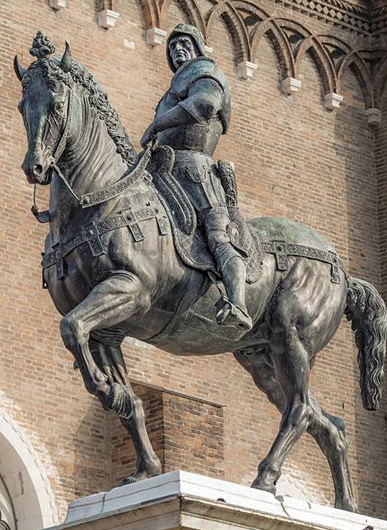
The Equestrian Statue of Bartolomeo Colleoni stands in Venice, Italy, showcasing the famed condottiero. Created by the artist Andrea del Verrocchio in the 15th century, this bronze statue captures Colleoni’s commanding presence.
Positioned in the Campo Santi Giovanni e Paolo, it celebrates his significant military accomplishments.
Crafted with intricate details, the statue exemplifies Renaissance artistry, emanating strength and leadership. This iconic work draws art enthusiasts and history buffs alike, representing a pivotal figure in Venetian history.
4. Genghis Khan Equestrian Statue

Genghis Khan’s Equestrian Statue stands majestically near Ulaanbaatar, Mongolia. Erected in 2008, this towering statue measures an impressive 131 feet in height, making it one of the largest equestrian statues in the world.
It commemorates the legendary Mongolian leader, symbolizing his significant impact on Mongolia’s history and culture.
Visitors can climb to the statue’s viewpoint, offering panoramic views of the surrounding grassy steppe. Crafted from stainless steel, the statue gleams under the sun, representing strength and resilience.
This remarkable landmark draws tourists worldwide, celebrating Mongolian heritage and attracting history enthusiasts.
5. Bronze Horseman
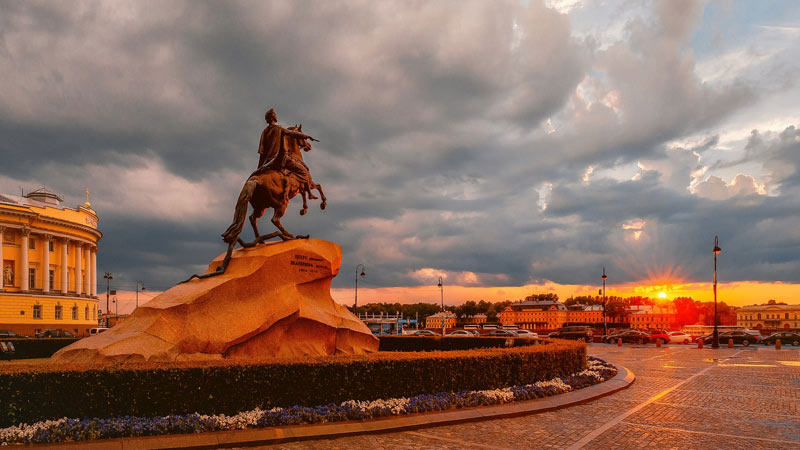
The Bronze Horseman, a stunning statue located in St. Petersburg, Russia, commemorates Peter the Great.
Erected in 1782, this iconic monument showcases a powerful horseman atop a massive stone pedestal, emphasizing the tsar’s strength and vision.
Crafted by the renowned French sculptor Étienne Maurice Falconet, the statue exemplifies the artistic mastery of its time.
It symbolizes Russia’s rise as a prominent power under Peter’s leadership, attracting numerous tourists eager to witness its grandeur and historical significance.
6. Jeanne d’Arc (Frémiet)
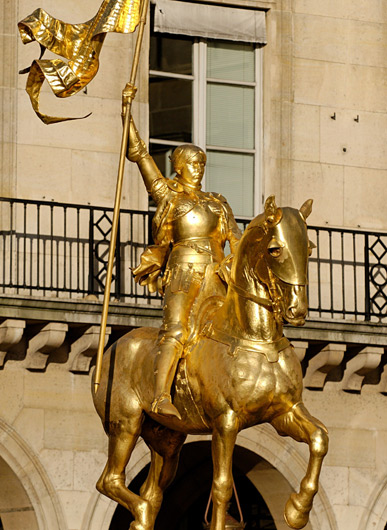
Jeanne d’Arc, a striking statue crafted by sculptor Emmanuel Frémiet, stands proudly in Paris. Erected in 1874, this bronze masterpiece celebrates the revered figure of Joan of Arc, a symbol of courage and patriotism.
The statue depicts her on horseback, wielding a banner, reflecting her role in leading the French army during the Hundred Years’ War.
Frémiet’s attention to detail brings Jeanne to life, showcasing her determined expression and flowing armor. Located in the Place des Pyramides, the statue draws many visitors intrigued by her historical significance.
As one of the most enduring symbols of French nationalism, Jeanne d’Arc inspires those who seek strength and resilience in the face of adversity.
7. Jan-Wellem-Reiterstandbild
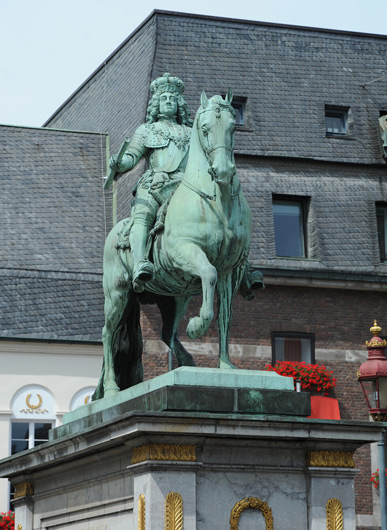
Source: visitduesseldorf.de
The Jan-Wellem-Reiterstandbild, located in Düsseldorf, Germany, is a stunning equestrian statue honoring Elector Johann Wilhelm of the Palatinate.
Crafted by the renowned sculptor Joseph Napoleon, it was unveiled in 1711, showcasing the elector atop his horse in an impressive bronze display.
This statue symbolizes Johann Wilhelm’s contributions to the city and his role as a patron of the arts. Positioned in the picturesque Johannes-Rau-Platz, it attracts visitors eager to admire its intricate design and historical significance.
8. Leonardo’s Horse
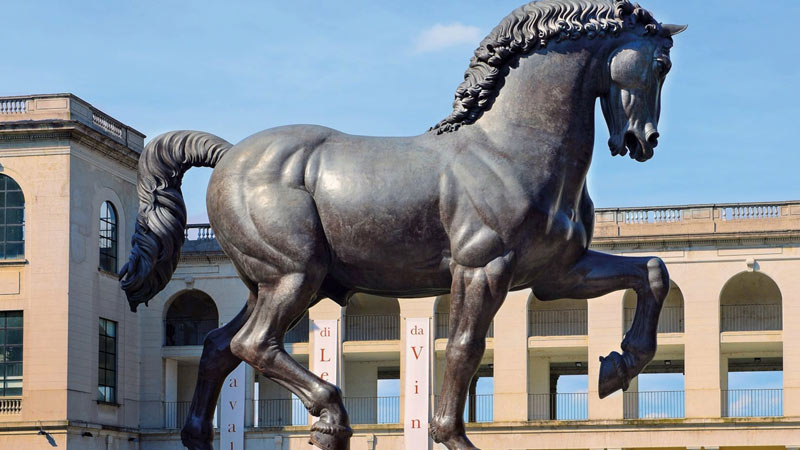
Leonardo’s Horse is a remarkable tribute to the genius of Leonardo da Vinci. This statue, originally envisioned for a grand equestrian monument, reflects da Vinci’s innovative approach to art and engineering.
Crafted in the late 15th century, it depicts a massive horse in a poised stance, symbolizing strength and grace.
Commissioned by the Duke of Milan, the project faced many challenges, leading to its eventual abandonment.
In the 1990s, sculptor Nina Akamu realized da Vinci’s vision, successfully creating a bronze version based on his sketches.
Located in Michigan, this statue stands as a testament to Leonardo’s enduring influence, captivating art lovers and history enthusiasts alike.
9. Equestrian statue of Louis XIV (Bernini)
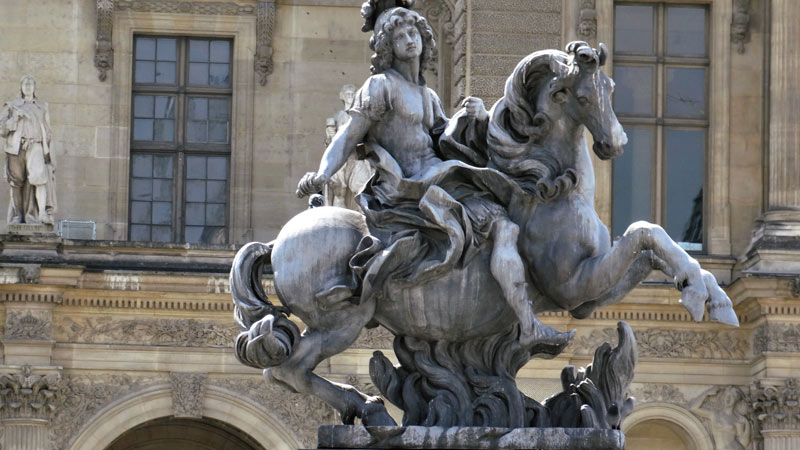
The Equestrian Statue of Louis XIV, crafted by Gian Lorenzo Bernini, stands as a testament to the grandeur of the French monarch.
Placed in the heart of the Palace of Versailles, this bronze masterpiece showcases Louis XIV atop a proud horse, symbolizing his absolute power and authority.
Completed in 1669, the statue highlights Bernini’s mastery in capturing dynamic movement and strength.
The statue faced its share of controversies, including its initial placement. Originally intended for the Place de la Révolution in Paris, it now resides near the Grand Écurie, emphasizing the connection between the king and his royal palace.
Visitors marvel at the intricate details that bring Louis XIV to life, reflecting the opulence of the era.
At over 20 feet tall, the statue’s impressive stature commands attention and respect. Often referred to as the “Sun King,” Louis XIV’s image radiates confidence and control, embodying the essence of monarchy during the Baroque period.
Bernini’s work remains a significant cultural landmark, drawing admiration from art enthusiasts and history buffs alike.
10. Monument to Philip IV of Spain
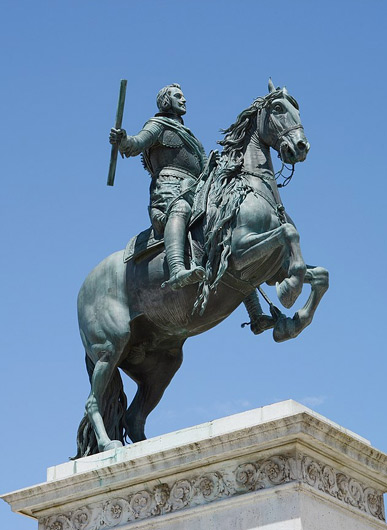
The Monument to Philip IV of Spain, located in Madrid’s Plaza de Oriente, features an equestrian statue that exemplifies artistic brilliance.
Crafted by the renowned sculptor Giovanni Battista Tiepolo in 1640, this bronze statue showcases the king on horseback, symbolizing his regal authority.
Situated near the Royal Palace, it’s a popular attraction for both tourists and locals alike.
Standing impressively at about 15 feet tall, the statue captures the essence of Baroque artistry while highlighting Spain’s historical significance during Philip IV’s reign.






